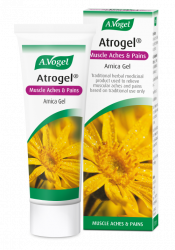An introduction to treatment for sprains
The initial reaction after spraining a joint is ‘How long will it take to recover?’ Although you need to give you joint plenty of time, there are certain short-term and long-term procedures you should follow to aid its recovery and to prevent re-injury.
Immediate treatments for sprains
There are certain immediate measures you can take when you sprain a joint. Initial treatment follows the PRICE procedure and thereafter, you will be able to work out how severe your injury is, and what further treatment is necessary:
- Protect – your joint from further injury by ceasing the activity you are performing
- Rest – the joint and only begin to use it again gently and once the symptoms have cleared
- Ice – the injured area. It is important to wrap your ice-pack or frozen peas in a tea towel or you may injure your skin. Keep re-applying ice packs at least over the next 24 hours
- Compress – using a bandage to support the injury and to prevent further swelling
- Elevate – if you can. Keeping the injury above the level of your heart will minimise the swelling.
It is also important in the next 72 hours not to do any further HARM:
- Heat – is usually not good to apply to a sprain as it encourages blood flow around the injury increasing swelling
- Alcohol – consumption can exacerbate the injury as it slows the healing process
- Running – or any other exercise or sudden movement of the joint will only cause further damage
- Massaging – immediately will increase blood flow and cause more swelling and pain.
How can I treat the inflammation and pain?
A sprain does not usually come without a certain degree of pain and swelling. Many people treat this with conventional pain-killers and anti-inflammatories. However, others have also found relief from herbal alternatives.
Arnica has been used for many years as ‘first-aid’ treatment following injuries, helping ease inflammation and bruising. It also has painkilling properties. Arnica can be found in licensed herbal remedies such as Atrogel Arnica Gel, which is applied directly to the injured area.
Will I need to see a doctor?
Your need for medical attention depends entirely upon the severity of your injury. Many people with Grade1 and some Grade 2 injuries manage to treat the symptoms without medical intervention. However, if your mobility is restricted and you are unable to put weight on or use your joint, it is important to see a doctor. Your doctor will be able to advise a recovery programme and may suggest physiotherapy to ensure that you recover full strength and mobility.
How long will it take to recover?
This also depends on the severity of your injury. Grade1 injuries often resolve within a few days but could take three or four weeks before it feels as strong as before. In the case of a Grade 3 injury, it may be several months before full fitness is regained.
Inconvenient as it may be, it is important to allow adequate recovery time otherwise you run a high risk of re-injury and lasting damage.








